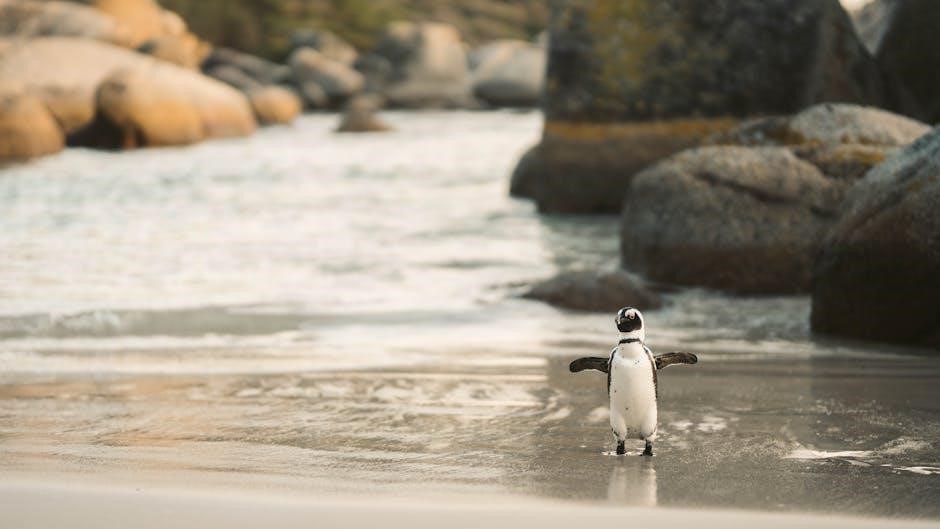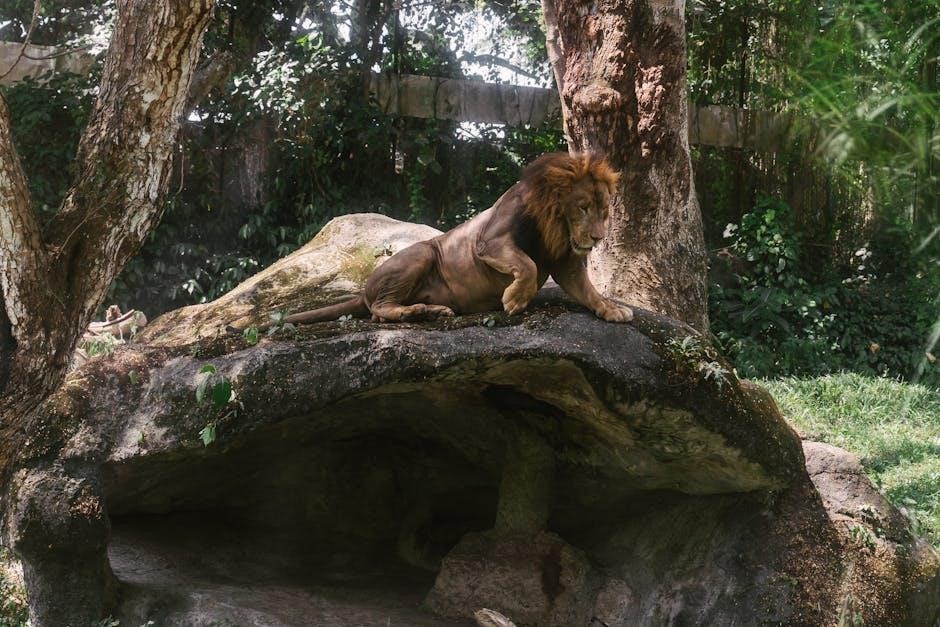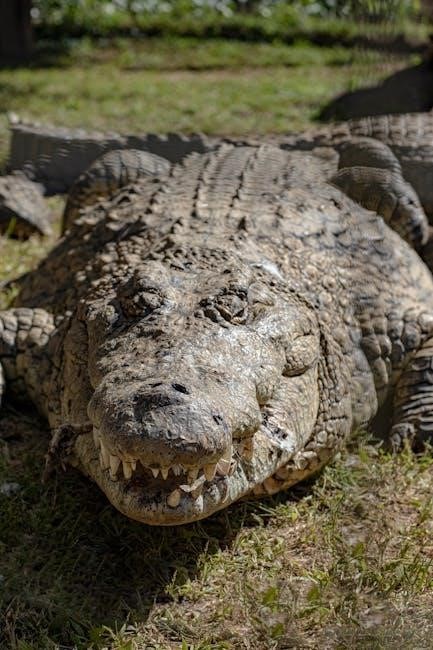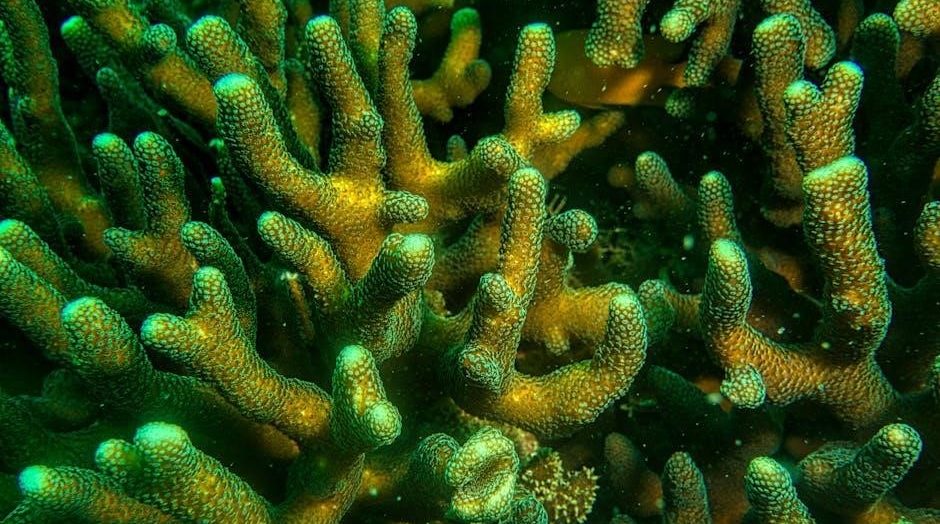Conservation biology is a multidisciplinary field focused on preserving biodiversity and addressing threats to ecosystems․ It integrates ecology, genetics, and evolutionary biology to develop practical solutions for species and habitat protection, ensuring a sustainable future for all life forms․
1․1 Definition and Scope of Conservation Biology
Conservation biology is a scientific discipline focused on understanding and addressing threats to biodiversity․ It integrates principles from ecology, genetics, and evolutionary biology to develop strategies for protecting species, habitats, and ecosystems․ The scope extends from genetic diversity within populations to ecosystem-level interactions, emphasizing the preservation of natural processes․ Conservation biology is both a theoretical and applied field, aiming to prevent extinction, restore degraded habitats, and promote sustainable coexistence between humans and nature, addressing ethical and value-driven aspects of biodiversity protection․
1․2 Importance of Conservation Biology in the Modern World
Conservation biology plays a critical role in addressing modern environmental challenges, such as habitat loss, climate change, and species extinction․ By focusing on biodiversity preservation, it ensures ecosystem services like clean water, pollination, and carbon sequestration․ The field also highlights the ethical responsibility to protect life on Earth, promoting sustainable development and human well-being․ Conservation biology provides practical solutions to mitigate human impacts on nature, ensuring a balanced coexistence between species and ecosystems for future generations․
History and Foundations of Conservation Biology
Conservation biology emerged as a scientific discipline in response to biodiversity loss, integrating ecology, genetics, and evolutionary biology to address ecosystem threats and promote sustainability․
2․1 The Emergence of Conservation Biology as a Scientific Discipline
Conservation biology arose in the late 20th century as a response to escalating biodiversity loss․ It combines principles from ecology, genetics, and evolutionary biology to address threats like habitat destruction and climate change․ This interdisciplinary approach aims to develop practical solutions for species preservation and ecosystem restoration․ The discipline emphasizes the importance of scientific research in informing conservation strategies and policy decisions to safeguard biological diversity for future generations․
2․2 Key Historical Milestones in Conservation Biology
The emergence of conservation biology as a distinct field was marked by key milestones, including the formation of the Nature Conservancy Committee in 1907 and the establishment of the Society for Conservation Biology in 1985․ The publication of Michael Soulé’s seminal work in 1980 solidified the discipline’s foundation․ Early legislation, such as the U․S․ Endangered Species Act of 1973, further catalyzed the field’s growth․ These events laid the groundwork for modern conservation practices, integrating ecological principles with policy and activism to address biodiversity loss․
Biodiversity: The Core of Conservation Biology
Biodiversity, the variety of life on Earth, is central to conservation biology․ It encompasses genetic, species, and ecosystem diversity, essential for maintaining healthy, functional ecosystems and supporting all life․
3․1 What is Biodiversity?
Biodiversity refers to the variety of life on Earth, encompassing genetic diversity within species, the range of species in an ecosystem, and the diversity of ecosystems themselves․ It is a critical component of conservation biology, as it ensures the stability and resilience of ecosystems, providing essential services like clean air, water, and food․ Biodiversity also supports ecological processes, including nutrient cycling and climate regulation, making it indispensable for maintaining life on Earth․
3․2 Levels of Biodiversity: Genetic, Species, and Ecosystem Diversity
Biodiversity exists at three primary levels: genetic, species, and ecosystem diversity․ Genetic diversity refers to the variation in genes within a species, enabling adaptation to environmental changes․ Species diversity measures the number of different species in an ecosystem, contributing to its stability and resilience․ Ecosystem diversity encompasses the variety of habitats and ecological processes, such as forests, wetlands, and coral reefs, which support complex interactions between species and their environments․ Together, these levels form the foundation of life’s complexity and functionality on Earth․

Threats to Biodiversity
Key threats include habitat loss, climate change, invasive species, overexploitation, and pollution, all driven by human activities, leading to ecosystem disruption and species extinction at alarming rates․
4․1 Habitat Loss and Fragmentation
Habitat loss and fragmentation are primary drivers of biodiversity decline, often caused by deforestation, urbanization, and agricultural expansion․ These activities reduce natural habitats, isolating species and disrupting ecosystems․ Fragmentation leads to population isolation, reducing genetic diversity and increasing extinction risk․ Small, isolated habitats cannot sustain viable populations, exacerbating species decline․ Addressing habitat loss is critical for conservation, requiring strategies to restore and connect fragmented ecosystems to ensure species survival and ecosystem resilience․
4․2 Climate Change and Its Impact on Ecosystems
Climate change significantly alters ecosystems, causing rising temperatures, shifting precipitation patterns, and increased frequency of extreme weather events․ These changes disrupt species interactions, lead to phenological mismatches, and alter habitat suitability․ Many species are forced to migrate or adapt, while others face extinction due to inability to cope with rapid environmental shifts․ Climate change also exacerbates existing threats, such as disease spread and invasive species, further destabilizing ecosystems and compromising biodiversity․ Its impacts highlight the urgent need for adaptive conservation strategies to mitigate these effects and protect vulnerable species․
4․3 Invasive Species and Overexploitation
Invasive species, introduced to new habitats, often outcompete native species, disrupting ecosystems and causing biodiversity loss․ Human activities like trade and travel exacerbate their spread․ Overexploitation, such as overfishing and logging, depletes populations beyond sustainable levels․ Both threats push species toward extinction, destabilize ecosystems, and reduce ecological resilience․ Addressing these issues requires strict regulation, public awareness, and restoration efforts to mitigate their impacts and protect vulnerable species from further decline․
Conservation Strategies and Practices
Conservation strategies include protecting habitats, reintroducing species, and managing populations․ Practices involve ecosystem restoration, sustainable resource use, and community engagement to ensure biodiversity preservation and ecological balance․
5․1 Conservation at the Population and Species Level
Conservation at the population and species level focuses on preventing extinction by managing genetic diversity, population sizes, and species interactions․ Strategies include captive breeding, reintroduction programs, and habitat restoration․ Monitoring population dynamics and genetic variability ensures the long-term survival of species․ This approach often involves targeted interventions to address specific threats, such as disease, predation, or human impact․ By prioritizing vulnerable populations, conservationists aim to maintain healthy, resilient species that can adapt to environmental changes and sustain ecosystems․
5․2 Ecosystem-Based Conservation Approaches
Ecosystem-based conservation focuses on preserving entire ecosystems to maintain biodiversity and ecological integrity․ This approach recognizes the interconnectedness of species and their environments, ensuring functional ecosystems that provide essential services like clean water and carbon sequestration․ By managing landscapes holistically, conservationists address broader environmental challenges, such as climate change and habitat fragmentation․ Adaptive management strategies are often employed to balance human needs with ecological health, fostering sustainable coexistence between humans and nature while protecting critical ecosystem processes․
5․3 The Role of Protected Areas in Conservation
Protected areas, such as national parks and wildlife reserves, play a critical role in conservation by safeguarding habitats and biodiversity․ These areas provide a refuge for threatened species, maintain ecosystem services, and allow for scientific research and education․ By limiting human activities, protected areas help mitigate habitat loss and fragmentation, ensuring the long-term survival of species․ Effective management of these areas is essential to achieve conservation goals and promote ecological balance, making them a cornerstone of biodiversity preservation strategies worldwide․

Ethical and Value-Driven Aspects of Conservation Biology
Conservation biology addresses ethical dilemmas, balancing human needs with biodiversity preservation․ It debates anthropocentric vs․ biocentric values, emphasizing the intrinsic worth of species and ecosystems․
6․1 The Anthropocentric vs․ Biocentric Debate
The anthropocentric view prioritizes human needs, seeing nature as a resource for human benefit․ In contrast, the biocentric perspective values all life inherently, regardless of human utility․ This philosophical divide shapes conservation strategies, with anthropocentric approaches focusing on ecosystem services for humans, while biocentric ethics advocate for preserving biodiversity for its intrinsic worth․ This debate influences policy, highlighting the tension between human-centric and nature-centric conservation goals․
6․2 The Role of Human Population and Consumption Patterns
Human population growth and consumption patterns significantly impact biodiversity․ Increased demand for resources leads to habitat destruction, pollution, and overexploitation of species․ Urban expansion and agricultural intensification encroach on natural ecosystems, threatening wildlife․ Climate change, driven by fossil fuel use, exacerbates these pressures․ Addressing these challenges requires sustainable practices, reduced consumption, and policies that balance human needs with ecological preservation․ Education and awareness are key to fostering behaviors that support biodiversity conservation and mitigate the environmental footprint of human activities․

Interdisciplinary Approaches in Conservation Biology
Conservation biology integrates ecology, genetics, and evolutionary biology with social sciences and community engagement to address biodiversity loss and ecosystem degradation effectively․
7․1 The Integration of Ecology, Genetics, and Evolutionary Biology
Conservation biology combines ecology, genetics, and evolutionary biology to understand species interactions, genetic diversity, and adaptation․ Ecology provides insights into ecosystem dynamics and species habitats, while genetics reveals population structures and evolutionary processes․ Together, these disciplines inform strategies to mitigate threats, restore populations, and maintain biodiversity․ This integration is crucial for developing effective conservation plans tailored to specific species and ecosystems, ensuring long-term survival and ecological balance in the face of environmental challenges․
7․2 The Role of Community Engagement and Education
Community engagement and education are vital for conservation success․ Involving local populations in conservation efforts fosters stewardship and raises awareness of biodiversity importance․ Educational programs highlight threats like habitat loss and climate change, empowering individuals to contribute to solutions․ Integrating conservation into school curricula inspires future generations to value and protect ecosystems․ Public awareness campaigns and workshops also promote coexistence with wildlife, ensuring sustainable practices and long-term conservation outcomes․ Education bridges the gap between scientific knowledge and community action, driving meaningful change for biodiversity preservation․

Future Directions in Conservation Biology
Future directions involve advanced technologies like AI and biotechnology for ecosystem restoration, alongside global policies and community-led initiatives to ensure biodiversity preservation and sustainable development․
8․1 Emerging Trends and Technologies in Conservation
Emerging trends include the use of AI and machine learning for biodiversity monitoring, drones for habitat mapping, and biotechnology for species restoration․ Genomic tools are aiding in understanding genetic diversity, while climate-smart conservation strategies address global warming impacts․ Citizen science platforms are engaging communities, fostering participatory research and awareness․ These innovations, combined with policy advancements, are reshaping conservation practices, offering hope for combating biodiversity loss and promoting sustainable ecosystems globally․
8․2 The Importance of Global Cooperation and Policy
Global cooperation is vital for addressing biodiversity loss, as threats transcend national borders․ International agreements like the Paris Accord and CBD set frameworks for collective action․ Policies harmonizing conservation goals with socio-economic needs ensure sustainable development․ Collaboration among governments, NGOs, and local communities strengthens enforcement and resource allocation․ Unified strategies foster innovation, sharing of knowledge, and equitable solutions, ultimately enhancing the effectiveness of conservation efforts worldwide and safeguarding ecosystems for future generations․
Conservation biology emphasizes the need to balance biodiversity preservation with human well-being․ Global efforts, ethical frameworks, and scientific advancements are crucial for ensuring a sustainable future for all life․
9․1 Summary of Key Concepts
Conservation biology focuses on preserving biodiversity by addressing threats like habitat loss, climate change, and invasive species․ It emphasizes ethical considerations, such as balancing human needs with ecological integrity․ Key strategies include ecosystem-based approaches, protected areas, and community engagement․ The field integrates disciplines like ecology, genetics, and evolutionary biology to develop practical solutions․ Global cooperation and policy are essential for long-term success, ensuring the survival of species and ecosystems for future generations․ Biodiversity’s value lies in its ecological, economic, and intrinsic worth․
9․2 The Path Forward for Conservation Biology
The future of conservation biology lies in advancing technologies, global cooperation, and community engagement․ Emerging tools like AI and biotechnology can enhance biodiversity monitoring and restoration․ Strengthening international policies and fostering interdisciplinary collaboration are critical․ Public awareness and education are essential to garner support for conservation efforts․ By addressing root causes of biodiversity loss and promoting sustainable practices, conservation biology can pave the way for a resilient and diverse planet, ensuring the survival of ecosystems for generations to come․
